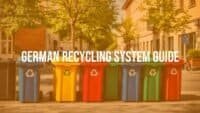German city sustainability rankings are not a single list. They are many studies that rate cities on environmental care, social fairness, and economic strength. These ratings act as clear signals, showing which cities are leading the way to greener, healthier places to live and visit. They give a quick view of progress and point out where more work is needed.
A ranking like this brings together many data points and methods. It looks at how a city grows while caring for the planet and its people. It is not just about parks; it also looks at public transport, clean energy, and social inclusion. The goal is a full picture of city health and long-term well-being.
Which Criteria Determine Sustainability in German Cities?
Defining sustainability in German cities uses a broad set of measures that touch almost every part of city life. The GDS-Index, for example, checks four main areas:
- Destination Management
- Supplier Performance
- Social Progress
- Environmental Performance

Here is what they often cover:
- Environmental Performance: climate action plans, carbon emissions, renewable energy share, resource and water use, public transport quality, air quality, and biodiversity protection.
- Social Progress: SDG use in local policy, corruption levels, personal safety, access to information, health and wellness services, inclusion, and funding for social programs.
Who Publishes German Urban Sustainability Rankings?
Many groups publish these rankings, each with a different focus and method. Internationally, the GDS-Movement rates DMOs, CVBs, municipalities, RTOs, and NTOs through the GDS-Index. It is a data-led group that pushes social, economic, and environmental change.
In Germany, the Institut der deutschen Wirtschaft (IW) runs studies on air quality, bike-friendliness, and EV charging. The Arcadis Sustainable Cities Index also reviews German cities inside a wider European and global picture. Together, these sources build a detailed view of urban sustainability in Germany.
Why Does Sustainability Ranking Matter for German Cities?
- Benchmarking: Cities see where they stand compared with others, which can spark new ideas and steady improvement. A city that sees a peer excel in green mobility may invest more in cycling or public transport.
- Planning and policy support: The results guide planners and leaders on where to act next and where to invest.
- Reputation and growth: A strong score can attract green-minded businesses, skilled workers, and visitors, helping the local economy. A weak score can trigger change and better plans.
How Is the Sustainability Data for German Cities Collected and Scored?
Data collection and scoring are careful processes built to show a full picture of a city’s environmental, social, and economic results. They pull from many sources and use clear methods to keep results accurate and comparable across cities. This careful work makes the rankings trusted and useful for decisions.

The hard part is lining up different kinds of data so they reflect real city progress. Inputs come from local reports and international indexes, aiming for a broad view of a city’s footprint. Scoring turns raw data into numbers that allow clean comparisons.
Main Data Sources and Methods
- Direct input from DMOs for the GDS-Index through detailed questions on strategy, policy, certifications, governance, marketing, and metrics.
- External data for Social Progress, such as the Social Progress Imperative and Corruption Perceptions Index.
- Environmental data from national agencies, energy reports, and transport authorities.
- Arcadis Sustainable Cities Index methods compare cities at one point in time and add a “Progress” pillar to track change over a decade.
Key Performance Indicators Used
KPIs give the numbers behind the rankings. The GDS-Index checks:
- Environmental Performance (20 questions): climate action, emissions, renewable energy, resource and water use, public transport, air quality, biodiversity.
- Social Progress (15 indicators): SDG use, safety, access to information, health and wellness, inclusion.
Arcadis uses four pillars. Examples are below:
| Pillar | Focus areas |
|---|---|
| Planet | Resilience, clean energy systems, low-emission transport, green infrastructure |
| People | Health, education, work-life balance, reliable public infrastructure |
| Profit | Economic results, access to workforce, business infrastructure, jobs |
| Progress | Advances toward SDGs over 10 years, using key indicators from the other three pillars |
What Factors Influence the Sustainability Scores of German Cities?
Many things work together to shape scores. These include direct environmental data, social results, and forward-looking public policy. Knowing these drivers helps explain why some cities do well and where others can focus to improve.
It is about current assets, daily action, and future plans. Climate commitments, resident well-being, and efficient infrastructure all add to the picture. Because cities change over time, staying strong in all these areas is an ongoing task.
Environmental Performance in Major German Cities
Environmental results are a key part of any rating. Cities are checked for climate action, lower emissions, and more use of wind, solar, and other renewables. Places that invest in clean tech and green infrastructure tend to do well. A clear plan to move away from fossil fuels and shift toward renewables raises scores.
Other factors matter too: careful water use, strong waste reduction and recycling, good public transport, cleaner air, and care for biodiversity. Cities with wide policies and real results in these areas show strong environmental commitment, which lifts their ratings.
Social Progress and Quality of Life Measures
Social progress looks at how well a city supports safe, healthy, and fair living conditions. Indicators often include how SDGs are used in local plans, low corruption, and high personal safety. Cities that focus on these areas build a stable base for their communities.
Access to information and digital tools, good health services, and inclusion for all groups also matter. Fair access to services and funding for social programs raises a city’s social score and shows care for people’s well-being.
Green Mobility: Public Transport and Bicycle Friendliness
Green mobility has a big impact on scores. Affordable, reliable, and dense public transport networks get higher marks and cut car use, emissions, and traffic.

Cycling also counts. The ADFC surveys bike-friendliness and scores cities on safety, infrastructure, and ease of use. Karlsruhe and Münster often score well, showing steady support for cycling. Investments in protected lanes, secure parking, and bike-sharing help a city’s mobility profile.
Clean Air and Urban Green Spaces
Clean air and green areas are direct signs of city health and comfort. Lower air pollution often comes from strict emission rules and strong green mobility. The IW points to cities like Erfurt and Salzgitter for good air quality.
Parks, forests, and green roofs do more than look nice. They help clean the air, cool the city in heat waves, and offer places to relax. Cities with high shares of green land, like Siegen (86%) and Göttingen (85%), show steady work for a healthier environment and better daily life.
Climate-Friendly Policy Initiatives
Active, climate-friendly policies drive higher scores. They show clear goals and direct action on environmental issues. This can include strong emission targets, incentives for renewables, and rules that push energy-efficient buildings. Cities that weave global sustainability goals into local mobility and land-use plans show real leadership.
Other helpful steps include growing EV charging networks, backing car-sharing, and investing in energy-saving public assets. Programs that push industry to recycle more and cut waste, and the use of digital tools like AI for monitoring, also help cities move ahead.
Availability of Electric Vehicle Charging Stations
EV charging access now plays a bigger role in ratings. As more people switch to electric cars, cities with strong charging networks support cleaner travel. The IW reviews how many charging points a city has compared with its population.
Wolfsburg, Ingolstadt, and Regensburg score well here. A high number of chargers cuts range worries and pushes more drivers to pick EVs. This helps cut air pollution and meet climate goals.
Which German Cities Rank Highest for Sustainability?
There is no single “winner,” because methods differ. Still, some cities often appear near the top for their work across environmental, social, and economic fields. They tend to show steady results and new ideas that make city life greener and easier.
Each ranking highlights different things-some focus on green areas, others on mobility or social fairness. A city may lead in one field and have room to grow in another. Even so, a pattern appears where a few cities show wide and steady work across many measures.
Cities with the Best Environmental Performance
Cities with large shares of green land often stand out. Examples include:
| City | Green space (%) |
|---|---|
| Siegen | 86 |
| Göttingen | 85 |
| Bergisch Gladbach | 84 |
| Salzgitter | 84 |
| Pforzheim | 83 |
| Hamburg | 71 |
| Stuttgart | 70 |
Air quality also matters. IW analyses highlight Erfurt, Salzgitter, Kaiserslautern, Jena, and the Hanover region for cleaner air. These places show that strong environmental policy and careful planning can raise city health.
Top German Cities for Social Progress
Social progress checks health, education, work-life balance, and reliable public services-the Arcadis “People” pillar. Many German cities do well here due to strong welfare systems and services. Even if city-by-city social scores are not listed the same way as environmental data above, the trend shows steady gains across Germany.
Key actions include using SDGs in city plans, keeping residents safe, promoting inclusion, offering access to core services, and backing fair housing. Cities that act on these points raise quality of life and their overall sustainability standing.
Bicycle- and Pedestrian-Friendly Cities
The ADFC rates cycling in cities over 100,000 people. Recent leaders include:
- Karlsruhe: 3.07 (lower is better)
- Münster: 3.17
- Göttingen: 3.27
- Erlangen: 3.29
- Heidelberg and Freiburg: 3.35
Among larger cities, Bremen leads with 3.57, with strong routes like the river path to the Weser stadium. Hanover (3.67), Frankfurt (3.52), Munich (3.84), and Leipzig (3.85) also show good results. IW’s Sustainability Index names Wolfsburg, Erlangen, Ingolstadt, Heidelberg, and Ulm as leaders for bike use thanks to solid networks and planning.
Leading German Cities for Sustainable Mobility
Sustainable mobility includes public transport and EV support alongside cycling. In a 2022 European ranking on access to climate-friendly mobility, Munich led among German cities, with Hamburg close behind.
Indicators included public transport price and stop density per square kilometer, plus EV charging access. On chargers per resident, the leaders are Wolfsburg, Ingolstadt, Regensburg, Heilbronn, and Salzgitter. These places support a shift to EVs while keeping strong public transport, setting a high bar for others.
How Can German Cities Improve Their Sustainability Ranking?
Improvement is ongoing. Cities need clear plans, new solutions, and broad community support. Even strong performers can still raise their game. Learning from leaders, using new tech, and sharing responsibility across the city helps lift results.
Progress in one field often helps in others. For example, better green mobility can lead to cleaner air and stronger public health. The aim is steady, connected steps that build a resilient city.
Best Practices from Germany’s Top Sustainable Cities
- Green mobility: Follow cities like Karlsruhe and Bremen by expanding protected bike lanes, linking public transport with shared mobility, and keeping fares fair and simple.
- Green spaces: Learn from Siegen and Göttingen by protecting parks and adding green roofs and vertical gardens.
- Clean transport: Match places like Wolfsburg by building dense EV charging networks and offering incentives for cleaner vehicles.
These ideas can be adapted to local needs while keeping the same goals: cleaner air, safe streets, and fair access.
Innovative Solutions Driving Urban Sustainability
- Mobility: Test autonomous electric buses, use smart traffic systems to cut delays and emissions, and grow on-demand services that connect with rail and metro.
- Energy and resources: Build smart grids, add waste-to-energy where it makes sense, and apply circular economy ideas to cut waste.
- Digital tools: Use data and AI for planning, tracking air and noise, and giving residents clear updates and feedback channels.
- Buildings: Promote designs that save energy and use low-impact materials.
Community Engagement and Local Initiatives
Local support is key to real change. Cities can boost results by keeping goals clear, inviting public input, and backing grassroots projects.
- Support community gardens, repair cafés, and neighborhood clean-ups.
- Run campaigns that promote smart consumption and back local eco-friendly businesses.
- Offer small grants and simple permits for community-led projects.
When residents help shape the plan, progress lasts longer and reaches more people.
What Is the Outlook for Urban Sustainability in Germany by 2030?
Germany faces high targets and steady effort through 2030, shaped by EU rules and national plans. With 2025 as the current year, the next five years matter a lot. Cities will work to cut emissions, build resilience, and lift daily quality of life.

The push comes from climate needs and the goal of staying a leader in sustainability. Cities will act as testbeds for new ideas and daily models for greener living. The shift to 2030 calls for more than small tweaks; it asks for a new way of planning and building cities.
Impact of the European Commission’s 2050 Roadmap
The European Commission’s 2050 Roadmap (2011) guides long-term change across the EU. It aims for a low-carbon economy by 2050 with at least 80% cuts below 1990 emissions. A key step along the way is a 40% cut by 2030.
This framework shapes German city plans by setting shared targets and giving a policy base for local action. It pushes cities to match local climate plans with EU goals, which has helped many European cities climb in sustainability rankings through steady investment and policy work.
Key Goals and Milestones for German Cities
- Cut greenhouse gas emissions toward the 40% reduction by 2030, backed by wider use of renewables and energy-efficient infrastructure.
- Build resilience to heat, storms, and floods with multi-use infrastructure and strong preparedness, including safer, greener buildings.
- Grow sustainable mobility with better public transport, cleaner vehicles, and wider walking and cycling networks.
- Support cleaner industry with recycling, waste cuts, and digital tools for monitoring and savings.
- Address housing and service access with fair pricing and added affordable homes.
Cities will keep track of these steps against the UN SDGs to push steady, planet-positive progress through 2030.












Leave a comment